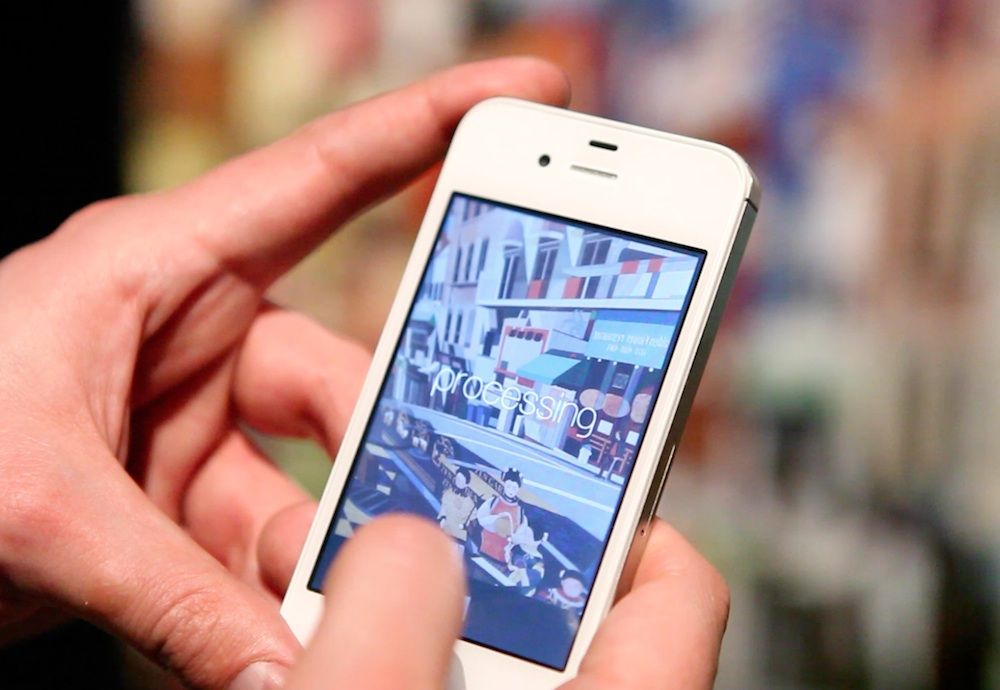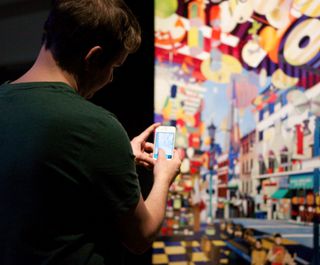New App Reveals Painting's Past With a Swipe

A new app for iPhones and iPads lets art viewers see the path a painting took from sketches to completion, from any angle.
Repentir, a free app developed by researchers in the United Kingdom's Newcastle University and Northumbria University, works so far with only one painting. But the developers say that the technology could soon be applied to many new paintings, and maybe even old ones.
"What you could do is take the actual imagery art historians have been making of old paintings and actually use the app as a way to reveal them," said Jonathan Hook, a professor at Newcastle University who studies human-computer interactions. At present, the app can reveal the history of "Transamerica," a new painting by artist Nathan Walsh. [Top 10 Science Apps for Your Phone]
Both the app and the painting are being formally revealed in Paris today (April 26) at the 2013 Association for Computing Machinery Conference on Human Factors in Computing. Walsh is a realist painter, which often makes art viewers believe he's "cheated" by altering photographs or otherwise not really creating his work by hand, Hook told LiveScience.
"What's really cool about the app is it allows people not just to believe that what Nathan does is real, but to get a handle on the process," Hook said.
"Transamerica" is a street scene as seen reflected in a San Francisco Chinatown gift shop. As he painted, Walsh took a photograph every day of the unfinished canvas, starting from pencil sketches and ending in oil paint. Hook and his colleagues then compiled these photographs into layers. Repentir app users can scroll through the layers using a scroll bar, or they can rub top layers away on-screen with a fingertip, revealing the earlier work underneath.

Viewers can snap a picture of the artwork from any angle as they view it in person, and the program will recognize the picture and adjust the layers accordingly. This means that you can even get up close and photograph just a tiny portion of the picture and the app will still recognize it, Hook said.
Sign up for the Live Science daily newsletter now
Get the world’s most fascinating discoveries delivered straight to your inbox.
"Rather than some alternative approaches like looking for a square shape or a QR code, this actually uses features within the image to match where the painting is," he said.
Repentir currently needs "Transamerica" to work, but any artist with digital photography equipment could join the project, Hook said. "Transamerica" will remain on display in Paris until May 2 and then is set to go to the Bernarducci Meisel Gallery in New York, where Hook and his colleagues plan to study whether the app changes the way art lovers approach the painting.
"The next step is to actually evaluate whether Repentir affects the way that gallery patrons experience Nathan's work," Hook said.
Follow Stephanie Pappas on Twitter and Google+. Follow us @livescience, Facebook & Google+. Original article on LiveScience.com.

Stephanie Pappas is a contributing writer for Live Science, covering topics ranging from geoscience to archaeology to the human brain and behavior. She was previously a senior writer for Live Science but is now a freelancer based in Denver, Colorado, and regularly contributes to Scientific American and The Monitor, the monthly magazine of the American Psychological Association. Stephanie received a bachelor's degree in psychology from the University of South Carolina and a graduate certificate in science communication from the University of California, Santa Cruz.












